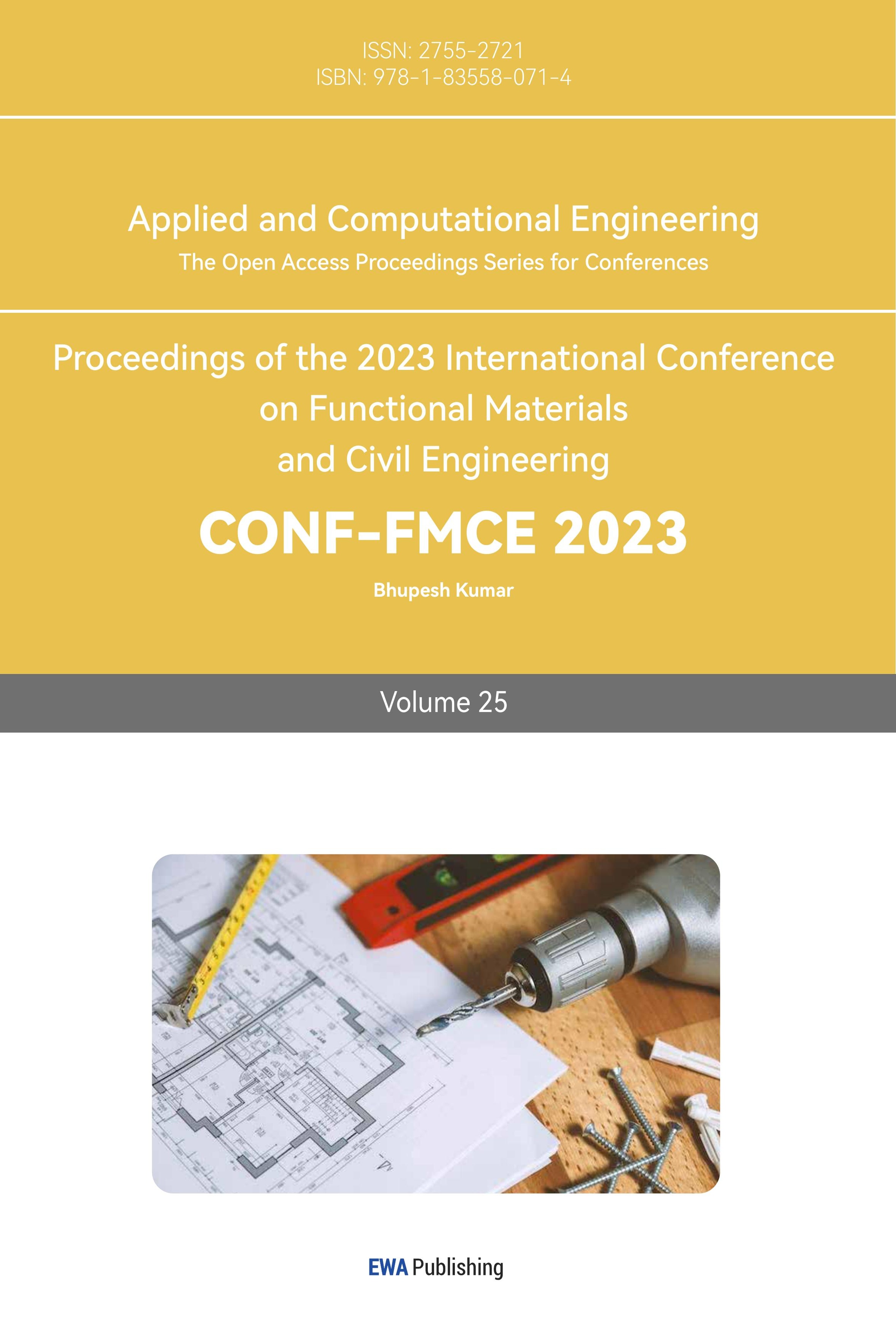1. Introduction
With the development of economy level in China, multi-story or single-story buildings cannot meet housing needs. High-rise buildings, typically defined as buildings with more than ten storeys or exceeding 24 meters in height, are prevalent in many cities across China[1]. These buildings are generally well-equipped and cater to various commuting and daily life needs. In the 1980s, China witnessed rapid development in terms of height, floor space, and building materials for high-rise structures [1]. Settlement, which refers to the displacement of a building from its original position due to the effect of load and gravity, is a common phenomenon that can occur in buildings due to different engineering geological conditions in China's vast territory [2]. With urban development, traditional monitoring methods may no longer be sufficient to address the monitoring needs of high-rise buildings. This article employs a status analysis approach to investigate the causes of settlement in high-rise buildings in China. By analyzing relevant data, the study proposes monitoring optimization strategies to ensure construction and usage safety, offering significant engineering value in the process. The implementation of these improvement programs aims to enhance safety measures and contribute to the overall progress of high-rise building construction.
2. Causes and hazards of high-rise building settlement in coastal and inland areas
2.1. Sea land reclamation
Coastal areas in China often undergo sea reclamation to expand urban areas, but this process can contribute to settlement issues. Most reclamation areas in China are constituted with small soil particles such as plant debris, shells and broken soil. These smaller soil particles tend to have greater compression, leading to settlement in recent fill areas. [2]. From a construction perspective, the soil in reclamation areas is typically loose. The loose soil particles result in a smaller contact area compared to natural conditions, reducing the force of friction between the particles and decreasing soil compactness. As a result, the soil in reclamation areas is more prone to settlement due to the increased load effect, further contributing to the settlement issues.
The following formulas can be reflected the problem that the backfill soil is looser than the soil in its natural state:
\( Ks=\frac{V2}{V1}(Initial looseness coefficient)\ \ \ (1) \)
\( Ks`=\frac{V3}{V1}(Final looseness coefficient)\ \ \ (2) \)
\( Ks \gt Ks`\ \ \ (3) \)
Formula (1) represents the ratio between the volume of soil after excavation and the volume of the same portion of soil before excavation. It quantifies the change in volume resulting from the excavation process. Formula (2) calculates the volume of soil needed to backfill the excavated area and restore it to the original foundation pit level. This includes filling the foundation pit and compacting the soil to achieve stability. Equation (3) indicates that the volume of soil required after backfilling and compaction is less than the volume of the excavated soil. This implies that the compaction process reduces the overall volume of the soil, resulting in a more compacted and denser fill material. By utilizing these formulas, it becomes possible to determine the amount of soil needed for excavation and reclamation. By comparing the final loosening coefficient with the initial loosening coefficient, it is then possible to assess the amount of soil that has been lost during the excavation process. This information can be used to determine the necessary amount of additional soil that needs to be added in order to achieve a balanced distribution of soil [3]. By using these formulas, the construction team can accurately calculate the amount of soil required for excavation and backfilling. This information is essential for ensuring that sufficient soil resources are available on-site and that the project progresses smoothly.
2.2. Groundwater table decline-induced subsidence
Groundwater forms a groundwater layer below the surface, and the upper soil, even the cushion below the foundation will produce a certain buoyancy. When residents extract groundwater for domestic use, the water table drops, reducing the buoyancy of the upper soil layer, including the cushion beneath the foundation. This decrease in buoyancy causes the affected soil to sink, resulting in building settlement [4].
Building load is the load exerted on the underlying soil by the mass of the building itself. Figure 1 shows the load-settlement relationship curve, where fa represents the characteristic value of the bearing capacity of the foundation, pu represents the ultimate bearing capacity of the foundation, K refers to the safety factor, p refers to the load of the building, s represents the settlement of the building, and Sa represents the allowable settlement of the building. As can be seen from the figure, the curve changes in the chart exhibit greater drops and radians as the building load increases. The settlement value changes as the building load increases. This also shows that the bearing capacity value of the foundation obtained when designing the foundation is a function of the settlement amount that can ensure safety. In other words, the greater the settlement, the larger the bearing capacity of the foundation required by the project. The loads of high-rise buildings are relatively large. If the load exceeds the allowable value Pu of the bearing capacity of the foundation, this also indicates that the building is in a dangerous state. The sudden increase in the S value indicates that the building is in danger. The dangerous state can cause the bearing capacity of the soil to be difficult to meet the weight of the building, triggering the settlement of the building [5]. Understanding the relationship between building load and foundation design is crucial in ensuring the stability and safety of structures. By analyzing the load-settlement relationship curve, engineers can make informed decisions during the design and construction phases.
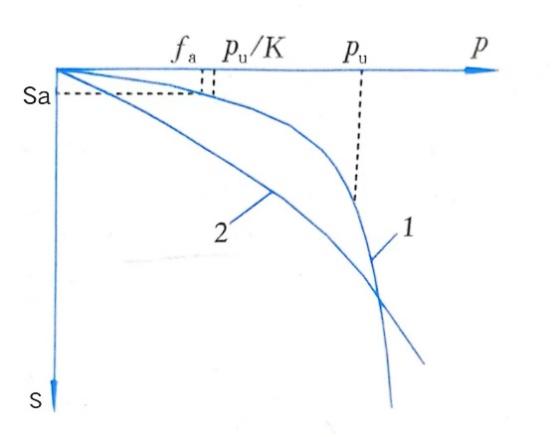
Figure 1. Load-settlement relationship curve.
2.3. Hazards of high-rise building settlement
Building settlement can result in the tilting of the structure, especially when caused by a decrease in the groundwater level. This reduction in buoyancy leads to differential settlement, generating a torque at the center of the circle or the corner point of the foundation. As a consequence, high-rise buildings may experience torsional tilting. From a safety perspective, building tilt can cause deformation of components such as elevators and misalignment of elevator shafts, thereby affecting their normal operation. Additionally, settlement-induced discomfort can impact the occupants' psychological well-being and affect occupancy rates.
Differential settlement also creates bending moments that are influenced by the building's load and gravity on the side experiencing lower settlement. This can result in the outer concrete being ripped on the side with less settlement, leading to yield limit being reached by the reinforcing bars in the tension zone. Ultimately, column failure can occur, compromising the building's stability and normal use [6].
3. Common methods of high-rise building settlement monitoring
3.1. Trigonometric leveling
3.1.1. The principle of trigonometric leveling. Trigonometric leveling is on of the most traditional and the normal way to monitoring high-rise buildings` settlement today. Its main principle is trigonometric function, by choosing two leveling points in an area, then measure the horizontal and vertical distance between two points, at last find the altitude difference between two points. The premise is that it is necessary for the instrument to erect the elevation of a point, and use equation (4) to complete the calculation of the height difference:
\( HAB=DABtanα+i-v\ \ \ (4) \)

Figure 2. Trigonometric elevation plan.
Among them, DAB represents the horizontal distance between the measurement points A and B, the α represents the overhead or elevation angle between the two measurement points A and B, i is the height of the tripod of the instrument plus the instrument itself, and v is the height of the observed marker. By using this formula, selecting a measurement point at the top of a high-rise building, making the first measurement, and setting up a measurement point at the same location of the building again at a certain time or monitoring period to measure, and substituting the measurement results into equation (4), if the error allows, the results of the two measurements produce a large difference, indicating that the building has a large settlement during this period [7].
3.1.2. Limitations about the trigonometric leveling. Trigonometric leveling measurement involves using a total station to monitor a specific point in a building. The data collected from this point travels through the atmosphere to reach the instrument. However, the presence of dust and impurities in the atmosphere affects the propagation path of light, introducing errors in the refractive path compared to a vacuum. These errors can impact the accuracy of the measurement results. To account for atmospheric refraction, particularly in one-way observation calculations, a correction formula (5) is used in triangulation elevation measurement. This formula incorporates the correction factor "f," which reflects the influence of atmospheric refraction on the measured height. By considering the effects of atmospheric refraction and incorporating the correction factor, more precise measurements can be obtained.
\( HAB=DABtanα+i-v+f\ \ \ (5) \)
\( f=\frac{(1-k)D2}{2R}\ \ \ (6) \)
The calculation formula (6) for the correction factor "f" indicates that the correction coefficient is influenced by the horizontal distance between two measurement points. Notably, the flat distances between different measurement points within the same building and the instrument's setup point can vary. As a result, the correction coefficient affects the accuracy of height difference measurements, leading to relatively large errors compared to the actual values.
Furthermore, triangular elevation measurements place certain demands on the elevation angle α. In Figure 2, the x-axis represents the instrument's elevation angle when the measurement point is 1000 meters away from the building being measured, while the y-axis represents the error between the true measurement value and the theoretical value. The chart demonstrates that by maintaining a certain horizontal measurement distance, the error can be kept around 9.7mm when the observation elevation angle ranges from approximately 0° to 3° horizontally. However, as the elevation angle increases, the error curve becomes steeper. At an elevation angle of 15°, the error reaches 10.1mm, with the rate of increase gradually accelerating [8].
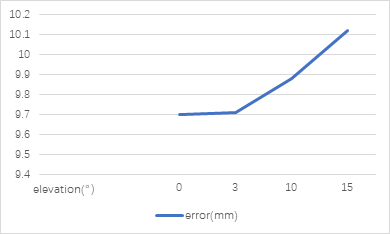
Figure 3. Error of an observation station in different elevations.
Consequently, the chart also highlights the limitations of triangular elevation measurements. In practical scenarios, the measurement distances can be limited due to terrain conditions, spatial restrictions, or obstacles posed by nearby buildings. As a result, higher elevation angles are required, leading to an increase in errors.
4. Priority scheme for new method of high-rise building settlement monitoring
Fiber optic sensors provide a monitoring method that involves embedding them within the structure itself. These sensors utilize the interference principle of light to collect settlement data, which is then analyzed by a computer system. The differential pressure settlement monitoring method is based on the original level, and the new differential pressure sensor is used instead of the level tube for measurement.
4.1. Insert fiber optic sensor for long-time monitoring
Long-diameter fiber optic sensors are highly resistant to various natural factors, including earthquakes and humidity. This makes them suitable for deployment in a wide range of locations throughout China.
During the construction phase of buildings, fiber optic sensors can be integrated by inserting them inside the columns or structural elements. This approach ensures that the sensors are seamlessly integrated into the building's framework.
SOFO system is one kind of fiber optic senor settlement monitoring systems, it consist of fiber, strain and supporting computer software. The operation of the fiber optic sensor is based on the principle that settlement and strain in the building structure cause a difference in the optical path between the measurement fiber and the reference fiber. This difference leads to interference, which can be analyzed by software running on a computer or portable PC. Equation (7) reflects the deformation monitoring content of the SOFO fiber monitoring system:
\( εm=εE+εT+εC+εS+εother=△\frac{L}{L}\ \ \ (7) \)
That is, the total strain εm of the building is equal to the strain εE of the building due to external loads, the strain εT of the building due to temperature changes, the strain εC of the building creep, the strain εC due to the concrete shrinkage and the strain εE of other causes sum of them. The total strain εm is equal to the ratio of the changing height △L of the settlement of the building to the original height L of the building.
Despite these disadvantages, the SOFO system's high resolution and improved accuracy make it a valuable tool for structural monitoring. Careful installation, regular maintenance, and appropriate protection measures can help mitigate some of the drawbacks and ensure the reliability and longevity of the monitoring system [9].
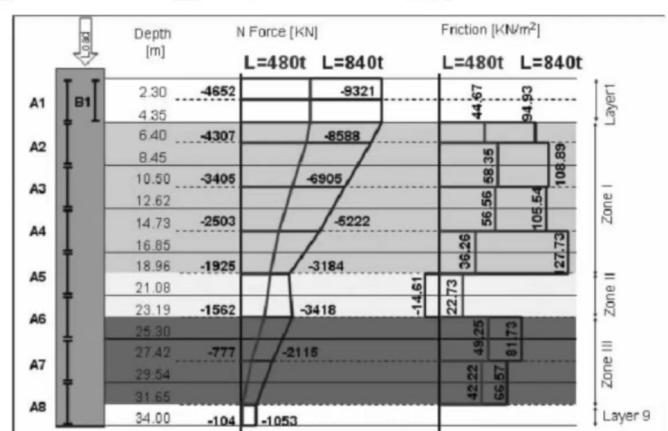
Figure 4. Axial force and friction resistance diagram of SOFO technique in pile foundation monitoring.
4.1.1. The advantage and disadvantage of SOFO system. The SOFO system is its high resolution, which can reach 2 \( µm \) . and the error can be reduced to ±0.2%. The main advantage of fiber optic sensors, compared to trigonometric leveling, is their direct insertion into concrete columns as fiber optic cables. This integration allows for seamless and continuous monitoring of the building's structural behavior. Additionally, fiber optic sensors are less affected by external natural factors, such as temperature and humidity, when compared to triangular elevation measurements. These sensors are designed to be highly resistant to environmental conditions, ensuring accurate and reliable data collection regardless of external influences [9].
Indeed, the SOFO system does have certain disadvantages when compared to the instruments used in trigonometric elevation measurement. One drawback of the SOFO system is the impact of temperature, the strain of optical fiber will increase with the increase of temperature, which may impact the accuracy of the measurement results. Care must be taken during the installation and welding process to ensure that the optical fiber remains intact and undamaged. Another drawback is the relatively higher cost of optical fiber compared to traditional instruments used in trigonometric elevation measurement. In the case of high-rise buildings with a large number of frame columns, the installation of multiple optical fibers can significantly increase the overall cost of the monitoring system. Furthermore, as high-rise buildings are occupied and used over an extended period, the fiber optic sensors attached to the exterior walls may be subjected to uncontrolled damage. This damage can result in inaccurate measurement data and a potential loss of monitoring capabilities in certain areas.
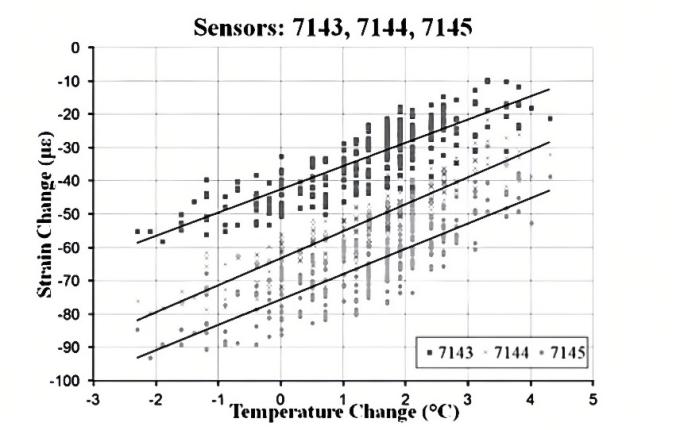
Figure 5. The relationship between strain variation and temperature of optical fiber.
Despite these disadvantages, the SOFO system's high resolution and improved accuracy make it a valuable tool for structural monitoring. Careful installation, regular maintenance, and appropriate protection measures can help mitigate some of the drawbacks and ensure the reliability and longevity of the monitoring system [9].
4.2. Differential pressure settlement monitoring system
4.2.1. Method and Mechanism Introduction. In complex measurement environments, it is often not feasible to use larger instruments to make measurements. When measuring, larger instruments can affect the efficiency of the measurement. During transportation, larger instruments are prone to damage, which will affect the timeliness of measurement. The differential pressure settlement monitoring system is based on the principle of the level feed-through, and the liquid level tube, the level communication device, is replaced with a smaller and more convenient pressure differential sensor.
The differential pressure sensor consists of a reservoir, a gas pipe, a signal transmitter, a collection instrument and a cloud display. The measurement mechanism is based on the pressure conduction measurement data, when the instrument is at a certain angle, and the water in the water pipe remains stable, indicating that the instrument is in a stable state, the acquisition instrument collects the pressure value in this case, and then transmits the pressure value to the relevant data analysis platform for data analysis, so as to obtain the calculation data. When the elevation angle changes, the pressure will reach re-equilibrium according to the principle of the connector, and the corresponding pressure will be transmitted to the data analysis platform again through the acquisition instrument, and then the settlement data will be obtained again.
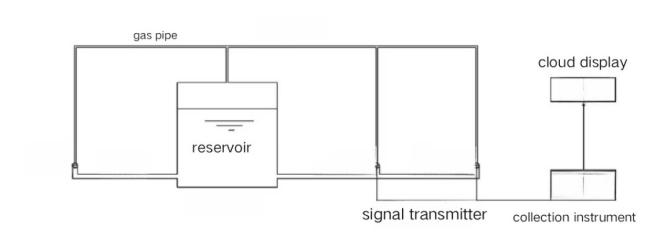
Figure 6. The constitutional diagram of differential pressure settlement monitoring system.
Equation (8) reflects the conversion process between pressure data and sedimentation data:
\( △H=(PR-PI)-\frac{PR0-PI0}{pg}\ \ \ (8) \)
In the equation, △H represents the changes of height due to the building`s settlement. PR represents the measured pressure at the reference point, PI represents the measured pressure of the measurement point, PR0 represents the initial value of the pressure at the reference point, PI0 represents the initial value of the pressure at the measurement point, ρ is the density of water and g is the acceleration due to gravity.
In settlement monitoring, it is necessary to measure the initial values of PI0 (pressure at the measuring point) and PR0 (pressure at the reference point) as reference points. As the building settles, the elevation angle of the instrument changes, leading to a change in the pressures measured at the reference point (PR) and measuring point (PI) in the differential pressure gauge.
By substituting these measured pressure values (PR and PI) into formula (8), which represents the settlement calculation formula, the computer can calculate the settlement amount. This calculation involves utilizing the relationship between the pressure differentials and the corresponding settlement values.
4.2.2. Advantages of differential pressure settlement monitoring systems. The most important advantage of differential pressure settlement monitoring system is that its data is approximate match with the monitoring data of digital level, so it can be used in the practical engineering. The figure below reflects the numerical curve of the measurement results of the differential pressure sensor and the liquid level. It can be seen that the values measured by the two methods at different times basically coincide. Comparison of the differential pressure sensor and the level measurement data in Building 2 of the Nanchang Knitting Factory Dormitory shows that the manual measurement value of the first set of curves at the top almost coincides with the instrument measurement value, and the error can be ignored, so the differential pressure sensor can be used as a solution to replace the level.
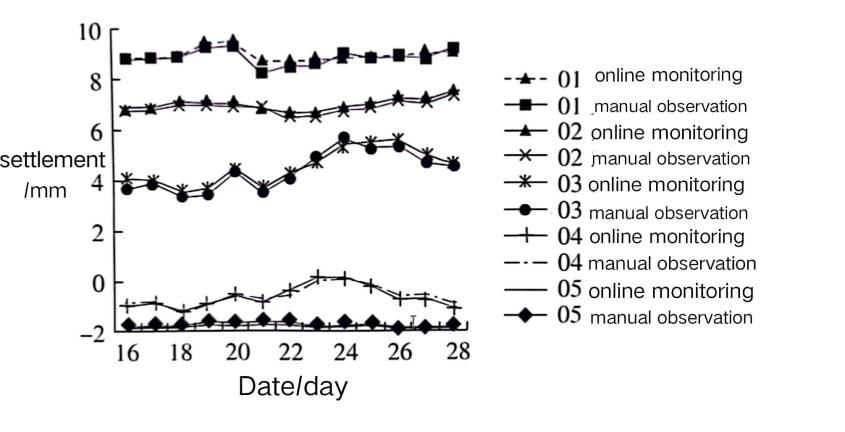
Figure 7. The comparison between the online monitoring and manual observation
The differential pressure settlement monitoring system, as a novel method, has undergone advancements in material selection. To ensure the stability of pressure intensity and minimize the presence of air bubbles in the reservoir, the system now requires the addition of a specific amount of antifreeze. Additionally, the system is sealed using silicone oil to enhance its performance [10].
5. Conclusion
In conclusion, evaluating the safety of high-rise buildings throughout their development process is crucial. Reasons for high-rise building settlement: (1) The settlement of high-rise buildings can be attributed to factors such as the low density of land reclaimed from the sea during reclamation and the large loads imposed on the building. Groundwater extraction can also contribute to settlement. (2) Hazards associated with high-rise building settlement: Building settlement can result in tilting, leading to component cracks that affect the structural integrity and limit the building's normal use. Corrosion of steel bars, following cracking, can further impact the bearing capacity of the structure. (3) Introduction of new monitoring methods: The paper discusses two emerging monitoring techniques, fiber optic sensors and the differential pressure settlement monitoring method. However, the author identifies certain limitations in these methods, such as potential damage to fiber optic sensors due to residual stress during welding and corrosion resulting from damage to the concrete protective layer. The selection of materials for differential pressure sensors is also mentioned as a limitation.
Moving forward, the author suggests improvements for these monitoring methods. For fiber optic sensors, the use of materials with high temperature resistance during service stage can reduce damage caused by residual stress. For the differential pressure settlement monitoring method, selecting more common and cost-effective materials is recommended. Furthermore, the author acknowledges that the paper focuses primarily on the theoretical aspects of high-rise building settlement and highlights the need for practical analysis. Future research will explore outer materials for fiber optic sensors that are resistant to high temperatures and investigate safer connections between the sensors and the building.
Acknowledgement
First of all, I would like to thank the professional teachers for compiling the bibliography that has greatly helped me cite the literature, and secondly, I would like to thank the teachers and students who helped me collect information and make suggestions during the writing process.
References
[1]. Qian Jiaru, Zhao Zuozhou, Ji Xiaodong, Ye Lieping, "Structural Design of High-rise Buildings"[M]. China Building Industry Press, March 2018, Third Edition P1 P11
[2]. Yan Xuexin et al. "Research Progress and Practice, Prevention and Control of Land Subsidence in Coastal Cities" [J]. Acta Geological Sinica (English Edition), 2020, 94(1): 162–175
[3]. Zheng Shaoying and Zhou Dongming, "Civil Engineering Construction - Technical Module"[M]. Tianjin Publishing and Media Group, Tianjin Science and Technology Press, June 2021, 1st Edition P8, P11Vfre 0-
[4]. Gong Zhaoqing, "Discussion on the Monitoring of Building Settlement in Reclamation Area"[J]. Building Materials & Decoration January 2016
[5]. Mo Haihong, Yang Xiaoping, Foundation Engineering[M]. China Architecture & Construction Press, South China University of Technology August 2019, Fourth Edition, P17
[6]. Xie Yi, "Research on Hazard Analysis and Treatment of Buildings by Uneven Settlement"[J] Modern Economic Information, No. 11, 2009
[7]. Yu Xiaobo, "Application of Triangular Elevation Measurement in Building Settlement Monitoring"[J] Geomatics and Spatial Geographic Information, Vol. 35 Supplement, September 2012
[8]. Cheng Guangran, Yao Guowen, Yang Fan, "Research and accuracy analysis of settlement monitoring method for precision triangular elevation implementation"[J] Science of Surveying and Mapping, Vol. 38, No. 1, Jan. 2013
[9]. Michael Roussel , Branko Glisic , Joo Ming Lau, Chor Cheong Fong , "Long-term monitoring of high-rise buildings connected by link bridges"[J] Civil Struct Health Monit 2014 4:57-67
[10]. Wang Junyan, Pan Wenjie, Ma Erbing, Li Yongjun, "Application of Differential Pressure Settlement Monitoring System in Building Settlement Monitoring"[J] Shanxi Architecture, March 2016, Vol. 42, No. 9.
Cite this article
Keqian,X. (2023). Analysis of monitoring optimization of high-rise building settlement in China. Applied and Computational Engineering,25,66-73.
Data availability
The datasets used and/or analyzed during the current study will be available from the authors upon reasonable request.
Disclaimer/Publisher's Note
The statements, opinions and data contained in all publications are solely those of the individual author(s) and contributor(s) and not of EWA Publishing and/or the editor(s). EWA Publishing and/or the editor(s) disclaim responsibility for any injury to people or property resulting from any ideas, methods, instructions or products referred to in the content.
About volume
Volume title: Proceedings of the 2023 International Conference on Functional Materials and Civil Engineering
© 2024 by the author(s). Licensee EWA Publishing, Oxford, UK. This article is an open access article distributed under the terms and
conditions of the Creative Commons Attribution (CC BY) license. Authors who
publish this series agree to the following terms:
1. Authors retain copyright and grant the series right of first publication with the work simultaneously licensed under a Creative Commons
Attribution License that allows others to share the work with an acknowledgment of the work's authorship and initial publication in this
series.
2. Authors are able to enter into separate, additional contractual arrangements for the non-exclusive distribution of the series's published
version of the work (e.g., post it to an institutional repository or publish it in a book), with an acknowledgment of its initial
publication in this series.
3. Authors are permitted and encouraged to post their work online (e.g., in institutional repositories or on their website) prior to and
during the submission process, as it can lead to productive exchanges, as well as earlier and greater citation of published work (See
Open access policy for details).
References
[1]. Qian Jiaru, Zhao Zuozhou, Ji Xiaodong, Ye Lieping, "Structural Design of High-rise Buildings"[M]. China Building Industry Press, March 2018, Third Edition P1 P11
[2]. Yan Xuexin et al. "Research Progress and Practice, Prevention and Control of Land Subsidence in Coastal Cities" [J]. Acta Geological Sinica (English Edition), 2020, 94(1): 162–175
[3]. Zheng Shaoying and Zhou Dongming, "Civil Engineering Construction - Technical Module"[M]. Tianjin Publishing and Media Group, Tianjin Science and Technology Press, June 2021, 1st Edition P8, P11Vfre 0-
[4]. Gong Zhaoqing, "Discussion on the Monitoring of Building Settlement in Reclamation Area"[J]. Building Materials & Decoration January 2016
[5]. Mo Haihong, Yang Xiaoping, Foundation Engineering[M]. China Architecture & Construction Press, South China University of Technology August 2019, Fourth Edition, P17
[6]. Xie Yi, "Research on Hazard Analysis and Treatment of Buildings by Uneven Settlement"[J] Modern Economic Information, No. 11, 2009
[7]. Yu Xiaobo, "Application of Triangular Elevation Measurement in Building Settlement Monitoring"[J] Geomatics and Spatial Geographic Information, Vol. 35 Supplement, September 2012
[8]. Cheng Guangran, Yao Guowen, Yang Fan, "Research and accuracy analysis of settlement monitoring method for precision triangular elevation implementation"[J] Science of Surveying and Mapping, Vol. 38, No. 1, Jan. 2013
[9]. Michael Roussel , Branko Glisic , Joo Ming Lau, Chor Cheong Fong , "Long-term monitoring of high-rise buildings connected by link bridges"[J] Civil Struct Health Monit 2014 4:57-67
[10]. Wang Junyan, Pan Wenjie, Ma Erbing, Li Yongjun, "Application of Differential Pressure Settlement Monitoring System in Building Settlement Monitoring"[J] Shanxi Architecture, March 2016, Vol. 42, No. 9.





